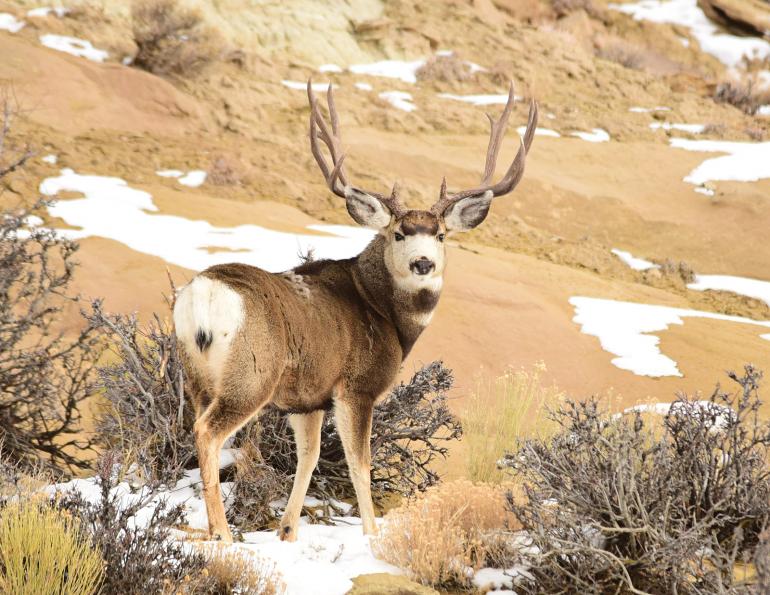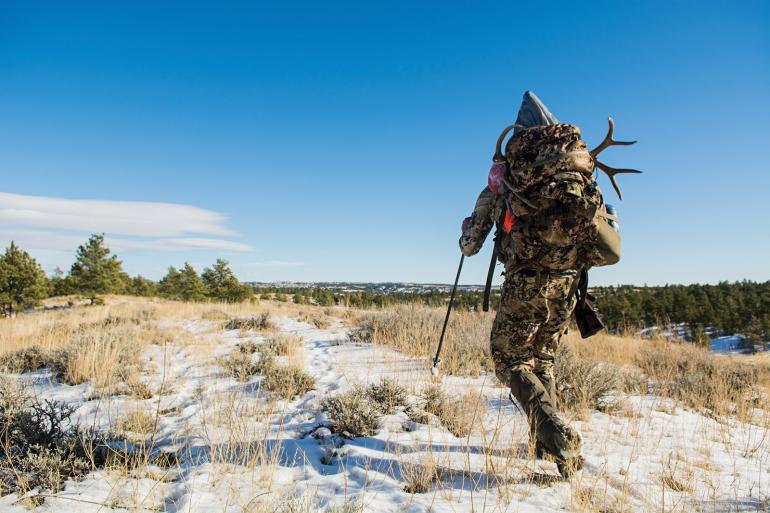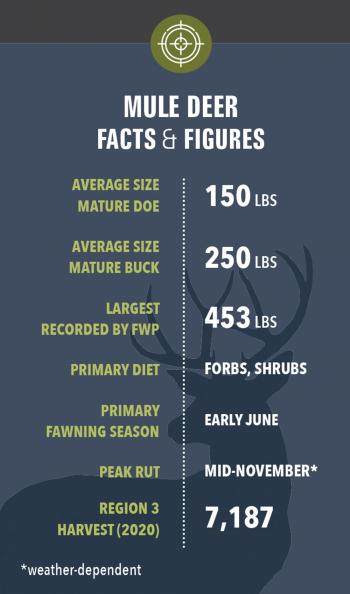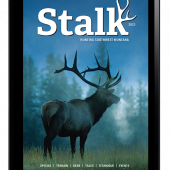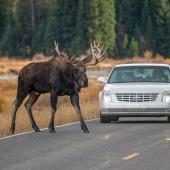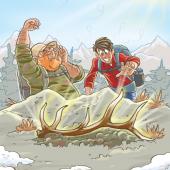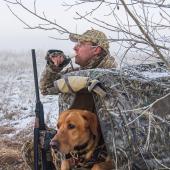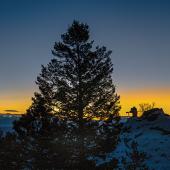High-Country Heavyweight
Pursuing the mighty mule deer.
Mountain-dwelling mule deer constitute the majority of the deer herds across southwest Montana. Though a case can be made for any one of our eight different ungulates to be dubbed king of the mountain, the mature mule-deer buck boasts a compelling list of characteristics that might just grant him the title. From their intelligence, to the beautiful and rugged places they call home, their big racks, and the fact that they make excellent table fare, mule deer have an impressive resume and sit near or at the top of many a western hunter’s list of favorite big-game animals.
Habitat
Mule-deer habitat varies greatly from one geographic region to another, and from one season to the next. Most mule deer found throughout southwest Montana are migratory, meaning they spend summers and winters in different areas. They can be found thriving in their summer range from late spring to early fall at high elevations, where browse and open meadows mix with timber and give way to the rocky alpine. Bucks spend their summers alone or in bachelor groups, and tend to live as far up the mountain as food sources and water permit. Does tend to congregate in herds and larger groups at lower elevations throughout the summer months. Once winter sets in, they collectively move toward lower-elevation winter ranges consisting of open-faced foothills and warmer valley floors. Though each herd tends to follow a slightly different timeline, most mule deer travel from high to low country sometime between October and December.
Behavior & Rut
At their summer range, deer are most concerned with staying well-fed, hydrated, and safe. They spend much of their time in their beds, sleeping. And when they aren’t taking it easy, they are most often found stuffing their bellies with high-mountain grasses and shrubs to prepare for the upcoming breeding season and ensuing winter. In mid- to late October, bucks begin to show the first signs of interest in does. They spar and fight with other bucks, vying for potential mates. As the breeding season progresses into November, so does activity. Though the entire breeding season may be referred to as “the rut,” peak rut generally occurs in mid- to late November, with the majority of does bred within this timeframe. Contrary to the early season, it is not uncommon to find a buck living with a half-dozen or more does at this time of year.
Rifle vs. Bow
Hunters pursuing mule deer in Region 3 may choose to do so at different times throughout the season, depending on their method of harvest. Bowhunters can begin hunting in early September and may pursue deer with a bow almost all the way through November—as long as they abide by appropriate regulations, such as hunter-orange requirements when rifle season starts. Bowhunters have the advantage of being afield prior to the more popular general rifle season, when there is less hunting pressure. Though warm temperatures and dry conditions present unique challenges, early-season hunters have the opportunity to find a buck in his summer range before he begins to move off in search of does and new country.
Bowhunters are the minority, however. Most folks pursuing mule deer will take to the field during the general rifle season, running from late October to late November. This coincides with the peak of the rut and provides the best opportunity for the average hunter to cross paths with a mature buck. Snow often blankets the mountainsides and temperatures may plummet, but bucks will absolutely be on the move, seeking out and chasing does. This can be a magical time of year for hunters willing to expend the time and energy it takes to brave the elements and pursue these animals in rugged country.
Pack-Out
When hunting deer in any terrain, one must always be prepared to responsibly transport game from the field to the freezer. In certain situations, it may be practical to harvest a deer near a road or vehicle, but an easy pack out should never be assumed. In southwest Montana, fortune favors the hunter willing to walk farther than the rest. A big, old mountain mule deer can weigh over 300 pounds. Butchering and transporting game in the backcountry can be difficult, depending on the location and conditions. Hunters are wise to head out with a sharp knife, a backup blade or sharpener, game bags, and perhaps some latex gloves or isopropyl alcohol wipes to keep things clean and tidy while processing an animal. A quality hunting pack with a load shelf and rigid frame enables a hunter to efficiently transport a broken-down animal to the vehicle or pick-up point.
Regs
The most important thing to remember about the regulations is to check and read through them every year. It’s easy to assume the rules are straightforward or always the same, but they can change from one season to the next. Double-check your license and tags to ensure you’re hunting within a valid area and during the correct season. All Montana FWP regulations can be found here.
Paul Peterson is a freelance writer, former outdoor industry professional, and fishing and big-game hunting guide. He calls Bozeman home, but spends much of his time afield or on the road with his trusty Labrador, Boone.


